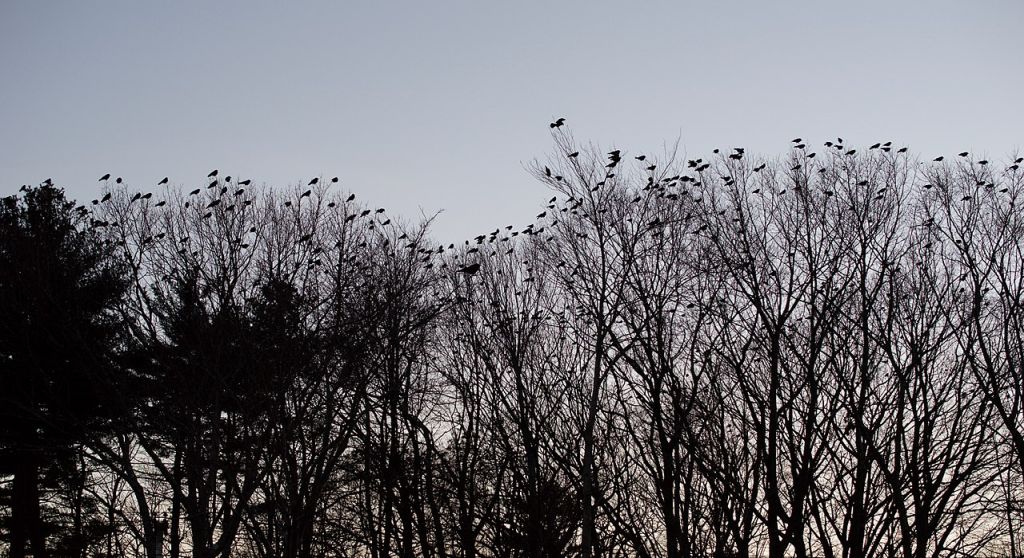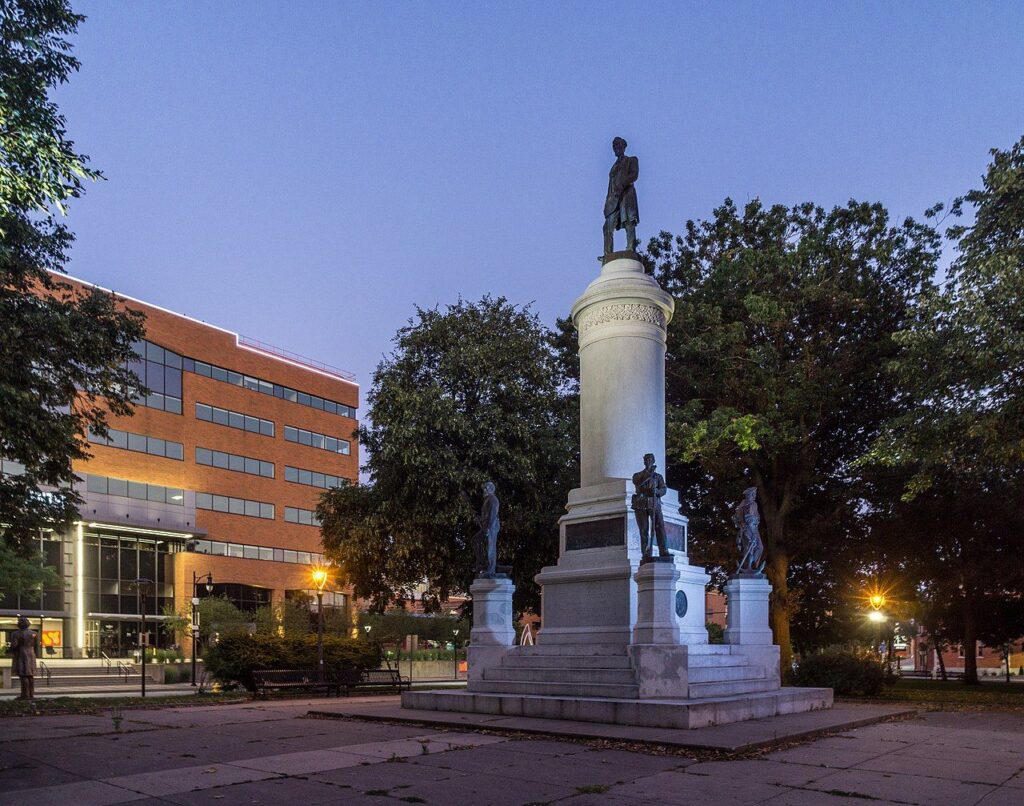
18 December 2024
Winter crows are incredibly persistent. Year after year they return in large numbers to the same city, even if the city harasses them. Some cities harass their winter crows, some celebrate them. This is a Tale of Two Cities from the winter crows’ perspective — Rochester, New York and Lawrence, Massachusetts.
But First. Large winter roosts of 10,000 to 100,000 birds is normal behavior for crows. Dr. Douglas Wacker described why at his Olympic Peninsula Audubon presentation in Nov 2024 (see below, parentheses added). Large roosts have:
- Safety in numbers (low odds of predation)
- Early warning system (many eyes on the lookout)
- Thermoregulation (warmth)
- Exploit a resource (we all share)
- Share information (catch up with your friends).
Once crows find a good location, described here, they all come together in the same place.
Thousands of crows come to Rochester, New York every winter where they prefer to roost in Washington Square with its well lit, mature trees.

The city doesn’t like the crow mess so every year they hire USDA to harass the crows for three nights. USDA’s goal is to “break up the roost” into smaller units. Rochester made the New York Times this week for their harassment techniques.
From the crows’ perspective, smaller units won’t provide safety in numbers so the crows will reconvene somewhere. But where? Will the new location cause trouble, too?
Rochester could choose a more permanent solution by “thinking like a crow.”
Penn State University used to have a big crow problem in the center of campus. In 2009, with the help of crow expert Margaret Brittingham, they picked a location away from people where they wanted the crows to roost. Since crows want to sleep with the lights on, Penn State floodlit a remote set of trees and harassed the crows away from the people zone. The crows moved to the floodlit site and abandoned central campus. Not only that, the crows passed on information about the new roost from crow to crow year after year and continued to use the new roost, not the old one. Ta Dah! Read more at Penn State relocates its winter crows.
Tens of thousands of crows visit Lawrence, Massachusetts every winter but as far as I can tell they have never been harassed there. Instead the roost is celebrated as a tourist attraction, described on the Winter Crow Roost website and YouTube channel.
Nov. 18, 2024: Join us for an unforgettable evening on Crow Patrol under clear skies (55°F, NW winds at 15 mph) as we explore the Merrimack River staging area east of Rt. 495. Witness the incredible sight of American and Fish Crows vocalizing and converging into tree tops in a wild, dramatic display at the east end of Island Street.
Don’t miss this breathtaking show of nature in action! Watch now and share with friends who love the beauty and mystery of wildlife.
— description of video at Winter Crow Roost on YouTube
So from a crows’ perspective, they’d rather choose Lawrence, MA over Rochester, NY.
(*) p.s. Rochester’s crows are never going to switch to Massachusetts. The two flocks come from different parts of the continent: Lawrence attracts crows along the Atlantic coast flyway. Rochester attracts crows from Canada’s interior and areas south of Hudson Bay.
I always wonder how far the crows travel to and from the roost. I guess that’s not solved yet. I wondered the same about European Starlings that roost on area bridges. Would be interesting to know how far do they range from the roost sight.
Mike, they travel up to 6-50 miles one way. Here’s more about it + a Pittsburgh map for crows. Where Do 10,000 – 20,000 Crows Go During The Day?
Crow sighting: yesterday (12/17/24) a small but vocal flock of crows passed overhead above Fair Oaks Street between Wilkins and Malvern, heading toward Schenley Park, about 4:40 p.m. The flock was smaller than ones I’ve seen earlier in the fall, and the first i’d noticed in over a week.